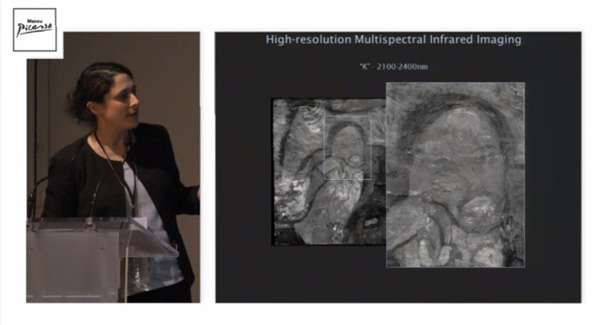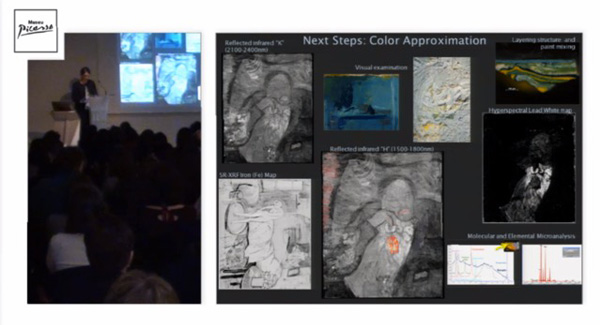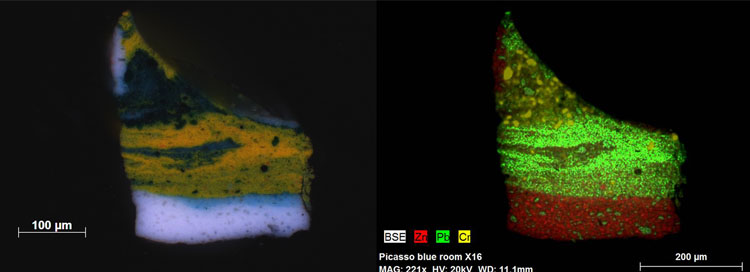In this three part series, Conservation Assistant Caroline Hoover outlines the process of treating a photogravure by Marius de Zayas.

(left and middle) Marius de Zayas, Alfred Stieglitz and John Marin, 1914. Photogravure, 22.1 x 16.5 cm. Gift of Fern M. Schad, 2004 (right) Camera Work, the source of the piece
ABOUT THE ART
This photogravure, Alfred Stieglitz and John Marin, is a work of art that was made from an original drawing by Marius de Zayas and printed onto very thin Japanese tissue. This piece was included in a collection of artists’ works published in the periodical Camera Work XLVI, 1914. Camera Work was a well known publication put together by Stieglitz to support and promote photography as an art form. He included photogravures because they were made from original negatives and often supervised by the artist or even at times printed by the artist himself. As such, they represented the original works very closely. The publication showcased the best examples of photogravure printing.
WHAT IS PHOTOGRAVURE?
The photogravure process is the transfer of the original photo negative to a transparency as a positive image. It is then contact printed onto light sensitive paper from which it is then transferred to a copper plate as a negative image. The plate is etched in acid, inked up, and printed as a positive image. As you can imagine, it was a very sophisticated and complicated process that required a lot of finesse.




